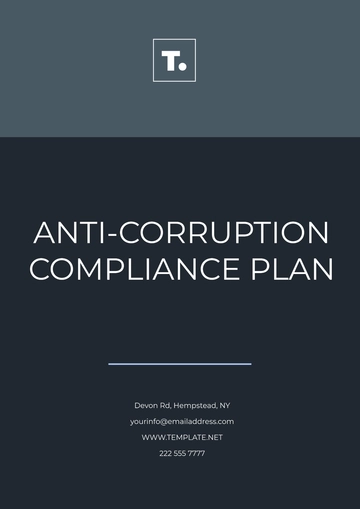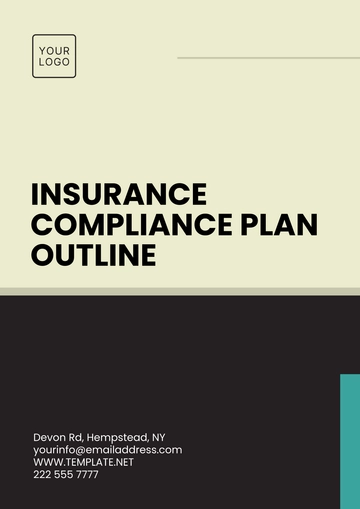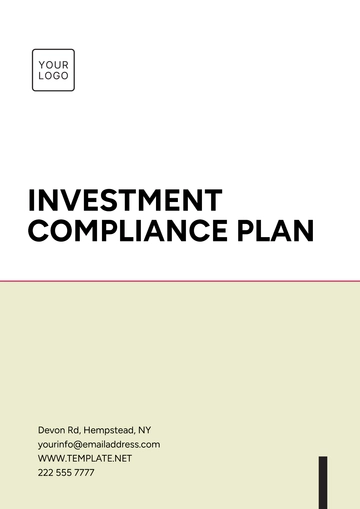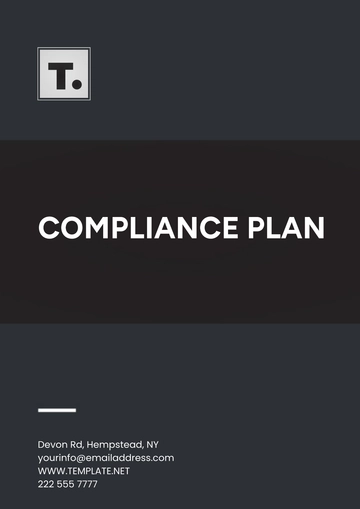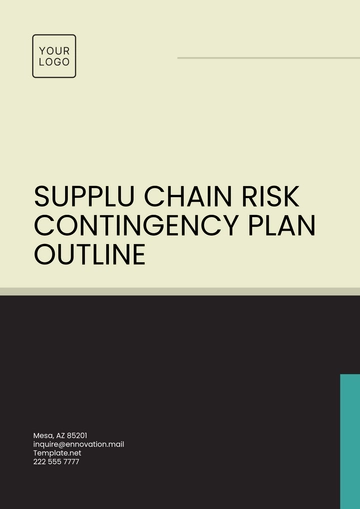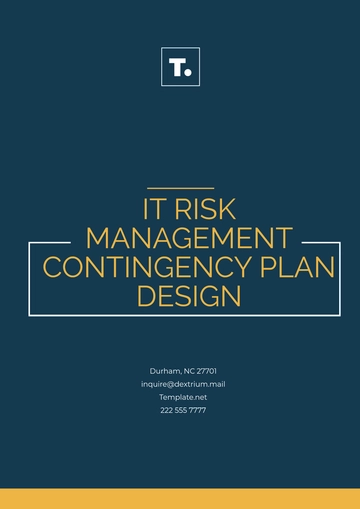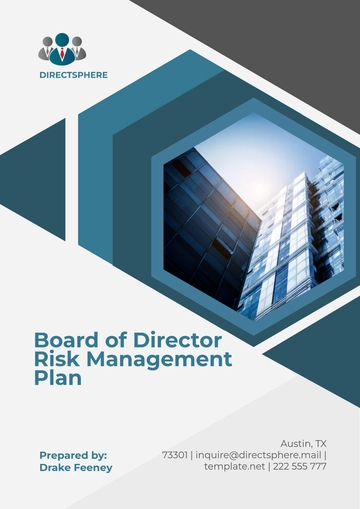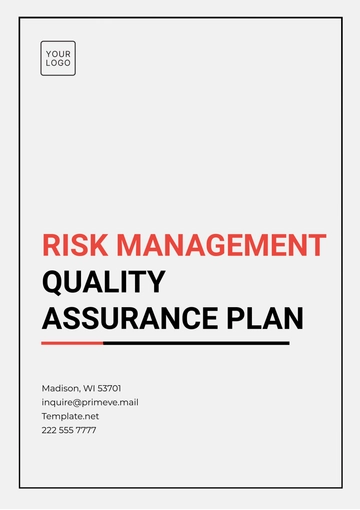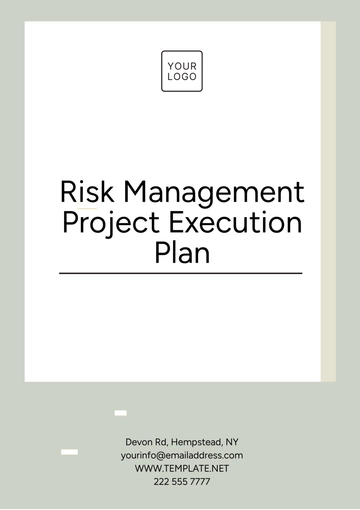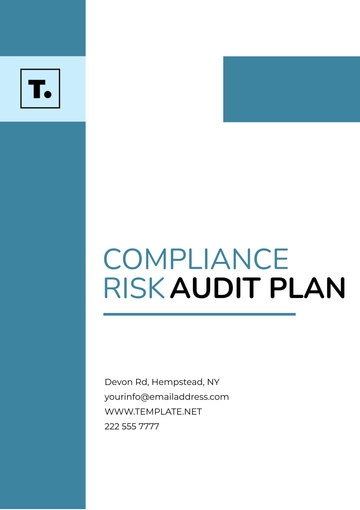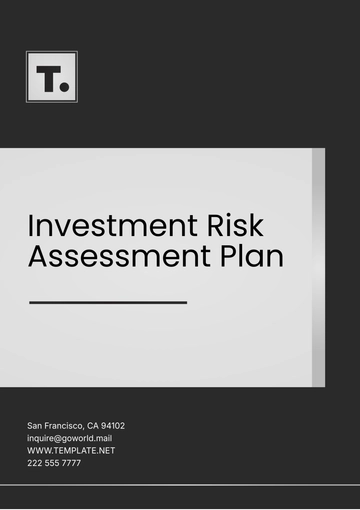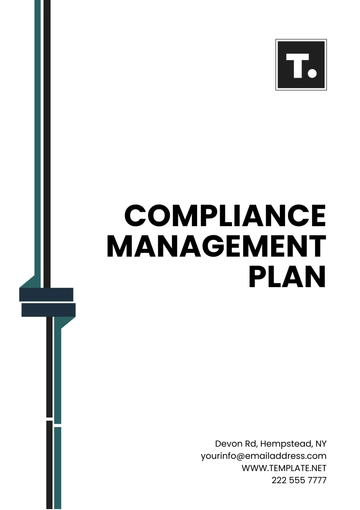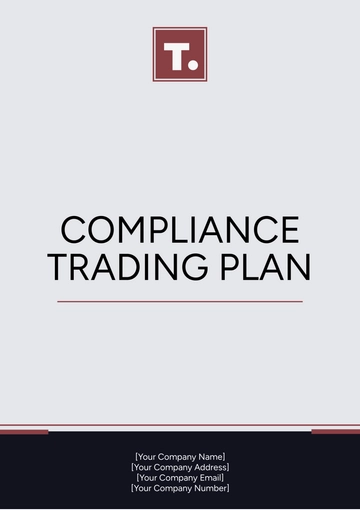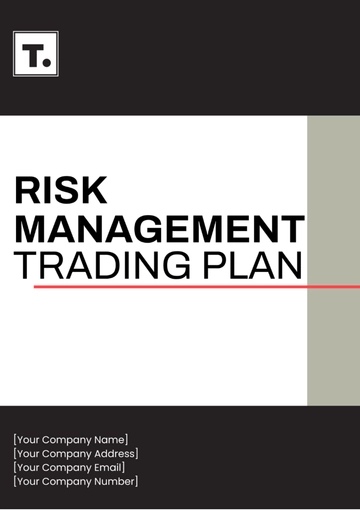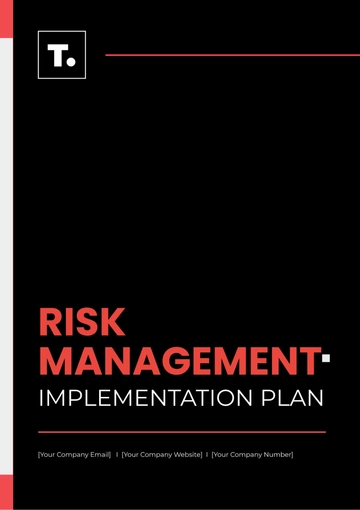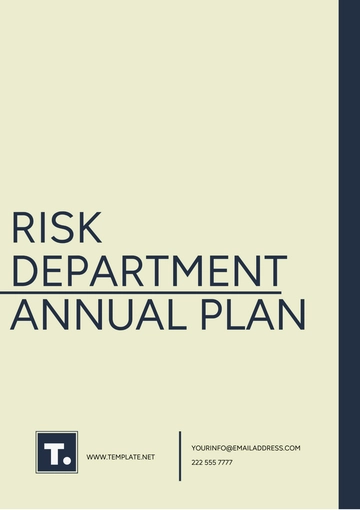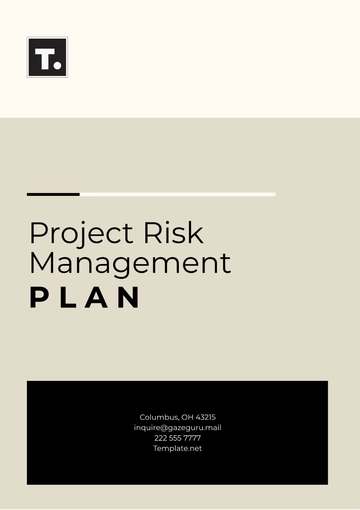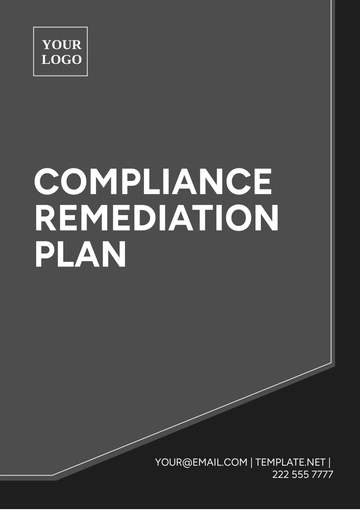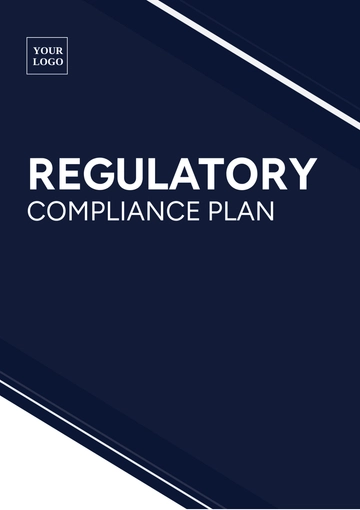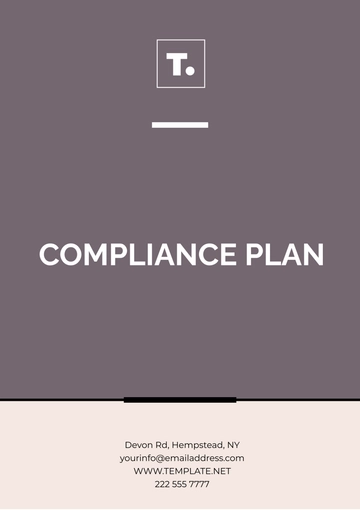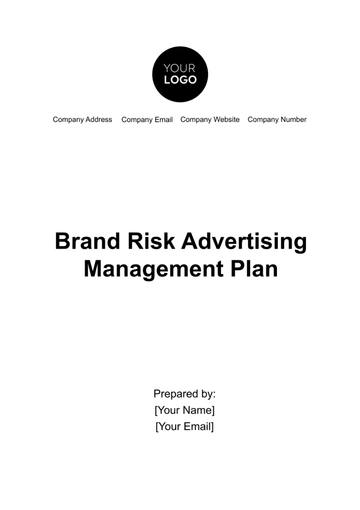Free Financial Risk Management Plan
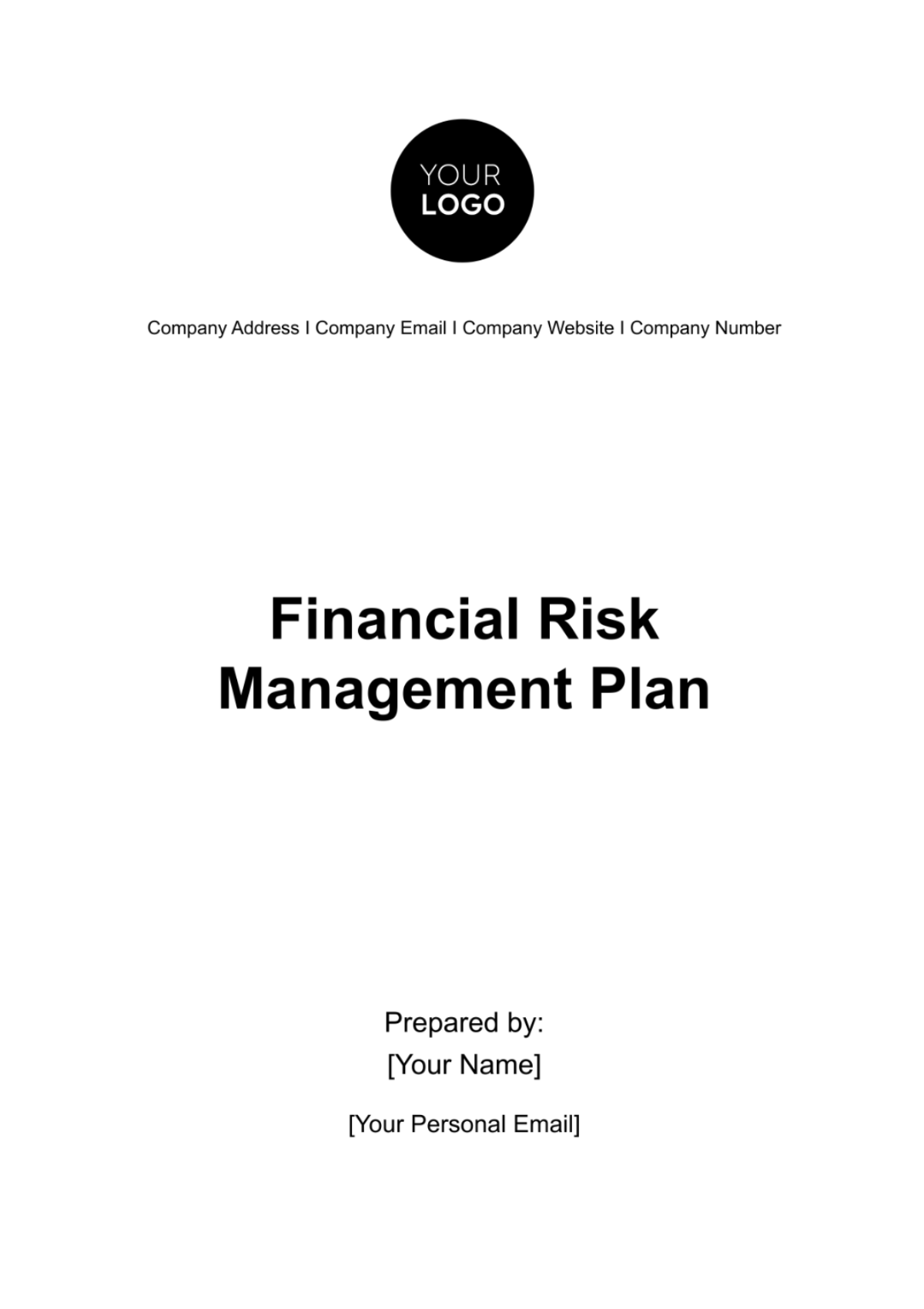
I. Introduction
This Financial Risk Management Plan is designed to identify and manage potential financial risks associated with the project or business operations of [YOUR COMPANY NAME]. The purpose of this plan is to provide a strategic approach to mitigating risks and ensuring the financial stability of the organization.
II. Risk Identification and Assessment
The following are key financial risks identified for the project or business venture:
Risk Type | Description | Likelihood | Impact |
|---|---|---|---|
Currency Fluctuations | Volatility in foreign exchange rates may impact international transactions. | High | High |
Interest Rate Changes | Changes in interest rates could affect financing costs. | Medium | Medium |
Cost Overruns | Unexpected increases in project costs due to inflation or material price hikes. | High | High |
These risks have been assessed based on their likelihood and potential impact on the project. Detailed mitigation strategies are outlined below.
III. Mitigation Strategies
To mitigate these risks, the following strategies will be implemented:
Currency Fluctuations:
Use of hedging instruments such as forward contracts.
Regular monitoring of exchange rates and adjustment of project budgets accordingly.
Interest Rate Changes:
Lock in fixed interest rates for loans to prevent unpredictability.
Establish a contingency fund to cover potential interest rate increases.
Cost Overruns:
Establish clear contracts with suppliers and contractors to set fixed prices.
Regularly review project budgets and adjust timelines to accommodate unforeseen costs.
IV. Conclusion
By implementing the strategies outlined in this plan, [YOUR COMPANY NAME] will effectively manage financial risks and ensure the financial success of its projects. This plan will be reviewed and updated periodically to address any emerging risks.
For further inquiries or support, please contact:
[YOUR NAME]
[YOUR EMAIL]
[YOUR COMPANY NAME]
[YOUR COMPANY ADDRESS]
[YOUR COMPANY WEBSITE]
Date of Plan: January 15, 2050
- 100% Customizable, free editor
- Access 1 Million+ Templates, photo’s & graphics
- Download or share as a template
- Click and replace photos, graphics, text, backgrounds
- Resize, crop, AI write & more
- Access advanced editor
Strategically plan your financial risk mitigation with our forward-looking Financial Risk Management Plan Template from Template.net! This plan is your roadmap to sustained success in navigating financial risks. Leverage the advanced functionalities of the user-friendly AI Editor Tool within this customizable template! Ensure clarity with your editable solution right away!
You may also like
- Finance Plan
- Construction Plan
- Sales Plan
- Development Plan
- Career Plan
- Budget Plan
- HR Plan
- Education Plan
- Transition Plan
- Work Plan
- Training Plan
- Communication Plan
- Operation Plan
- Health And Safety Plan
- Strategy Plan
- Professional Development Plan
- Advertising Plan
- Risk Management Plan
- Restaurant Plan
- School Plan
- Nursing Home Patient Care Plan
- Nursing Care Plan
- Plan Event
- Startup Plan
- Social Media Plan
- Staffing Plan
- Annual Plan
- Content Plan
- Payment Plan
- Implementation Plan
- Hotel Plan
- Workout Plan
- Accounting Plan
- Campaign Plan
- Essay Plan
- 30 60 90 Day Plan
- Research Plan
- Recruitment Plan
- 90 Day Plan
- Quarterly Plan
- Emergency Plan
- 5 Year Plan
- Gym Plan
- Personal Plan
- IT and Software Plan
- Treatment Plan
- Real Estate Plan
- Law Firm Plan
- Healthcare Plan
- Improvement Plan
- Media Plan
- 5 Year Business Plan
- Learning Plan
- Marketing Campaign Plan
- Travel Agency Plan
- Cleaning Services Plan
- Interior Design Plan
- Performance Plan
- PR Plan
- Birth Plan
- Life Plan
- SEO Plan
- Disaster Recovery Plan
- Continuity Plan
- Launch Plan
- Legal Plan
- Behavior Plan
- Performance Improvement Plan
- Salon Plan
- Security Plan
- Security Management Plan
- Employee Development Plan
- Quality Plan
- Service Improvement Plan
- Growth Plan
- Incident Response Plan
- Basketball Plan
- Emergency Action Plan
- Product Launch Plan
- Spa Plan
- Employee Training Plan
- Data Analysis Plan
- Employee Action Plan
- Territory Plan
- Audit Plan
- Classroom Plan
- Activity Plan
- Parenting Plan
- Care Plan
- Project Execution Plan
- Exercise Plan
- Internship Plan
- Software Development Plan
- Continuous Improvement Plan
- Leave Plan
- 90 Day Sales Plan
- Advertising Agency Plan
- Employee Transition Plan
- Smart Action Plan
- Workplace Safety Plan
- Behavior Change Plan
- Contingency Plan
- Continuity of Operations Plan
- Health Plan
- Quality Control Plan
- Self Plan
- Sports Development Plan
- Change Management Plan
- Ecommerce Plan
- Personal Financial Plan
- Process Improvement Plan
- 30-60-90 Day Sales Plan
- Crisis Management Plan
- Engagement Plan
- Execution Plan
- Pandemic Plan
- Quality Assurance Plan
- Service Continuity Plan
- Agile Project Plan
- Fundraising Plan
- Job Transition Plan
- Asset Maintenance Plan
- Maintenance Plan
- Software Test Plan
- Staff Training and Development Plan
- 3 Year Plan
- Brand Activation Plan
- Release Plan
- Resource Plan
- Risk Mitigation Plan
- Teacher Plan
- 30 60 90 Day Plan for New Manager
- Food Safety Plan
- Food Truck Plan
- Hiring Plan
- Quality Management Plan
- Wellness Plan
- Behavior Intervention Plan
- Bonus Plan
- Investment Plan
- Maternity Leave Plan
- Pandemic Response Plan
- Succession Planning
- Coaching Plan
- Configuration Management Plan
- Remote Work Plan
- Self Care Plan
- Teaching Plan
- 100-Day Plan
- HACCP Plan
- Student Plan
- Sustainability Plan
- 30 60 90 Day Plan for Interview
- Access Plan
- Site Specific Safety Plan
